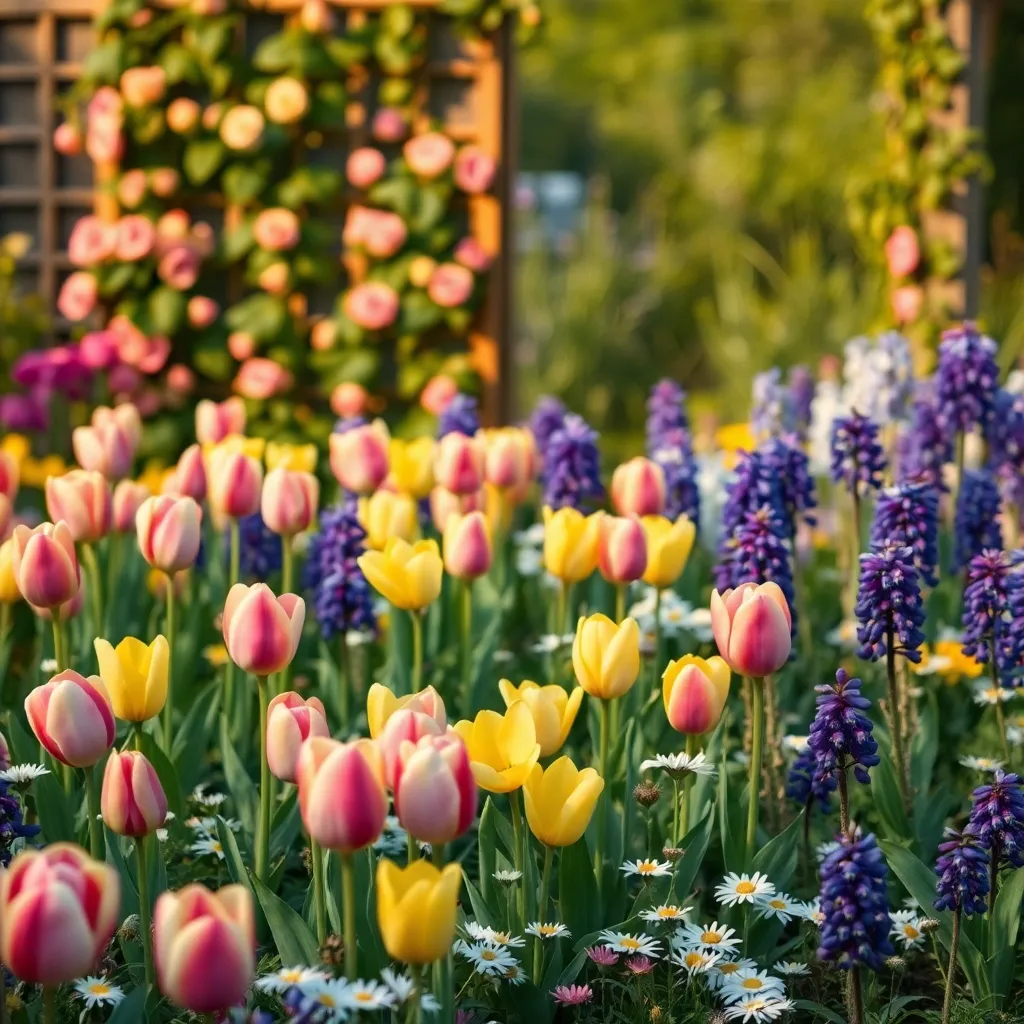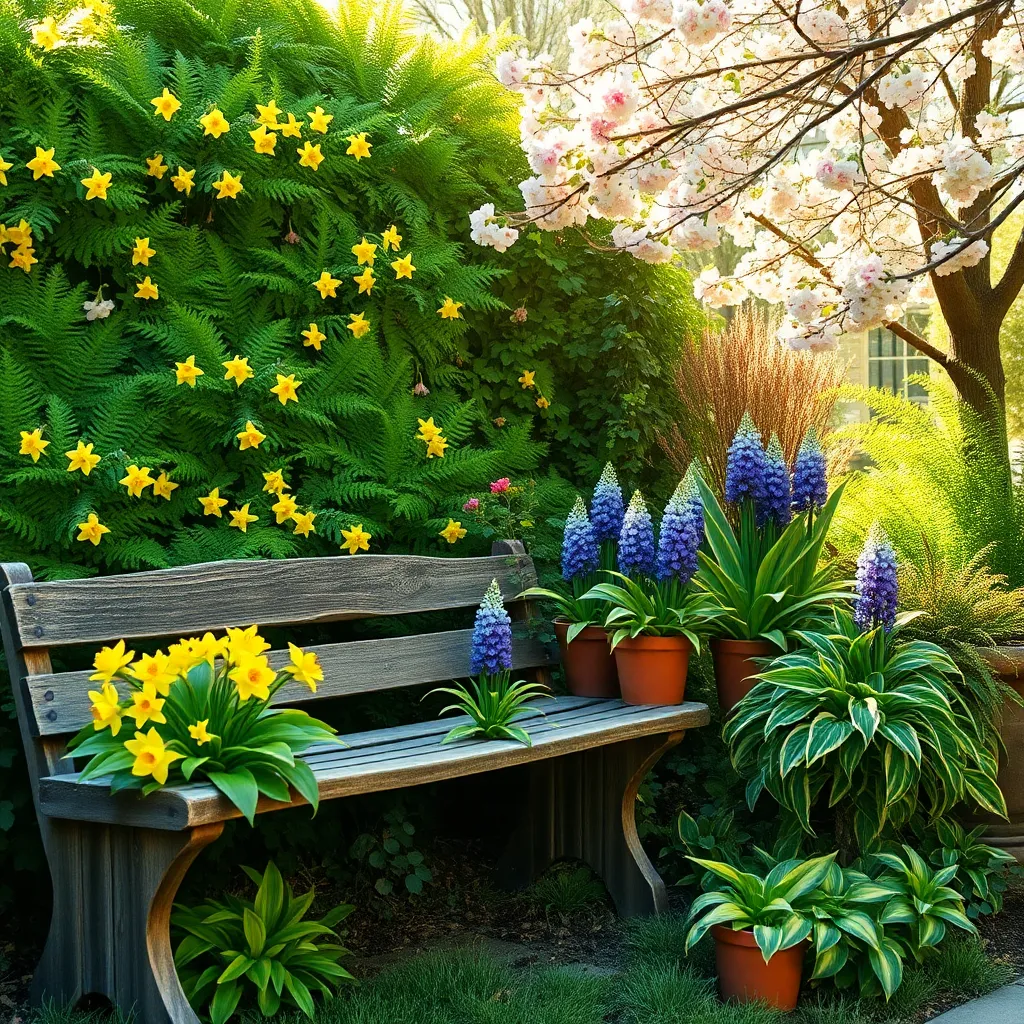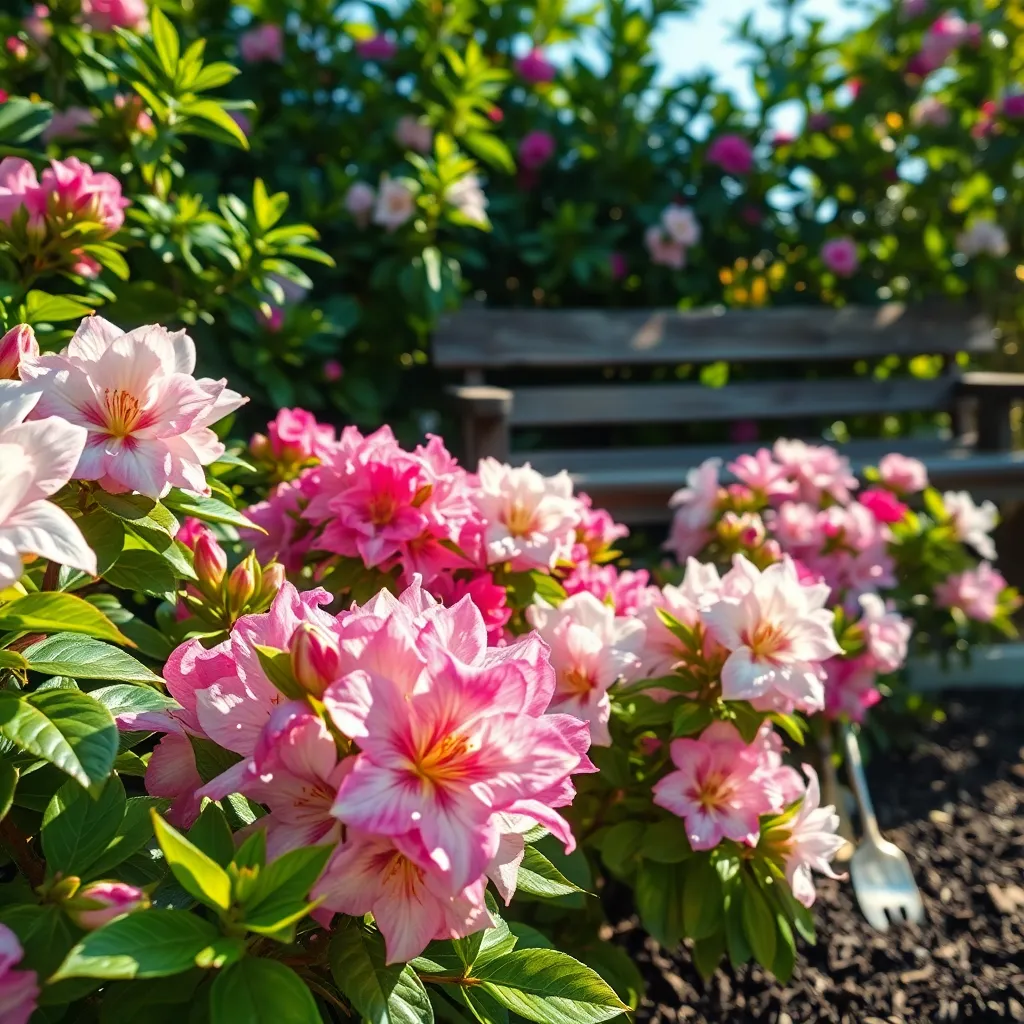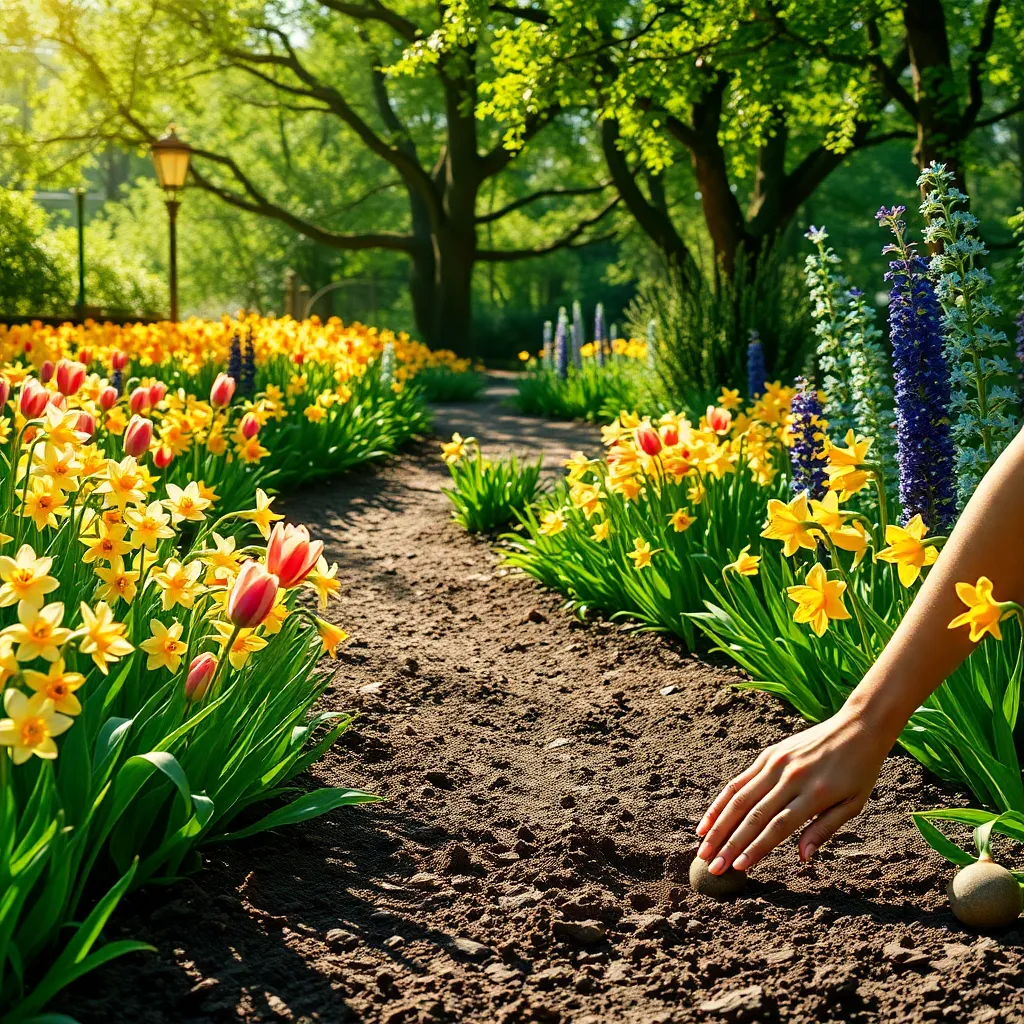Spring is the season of renewal, a time when the garden awakens, ready to burst forth with vibrant color and life. Whether you’re taking your first steps into the world of gardening or you’re a seasoned green thumb, the joy of curating a spring garden is a uniquely rewarding experience that connects us to the rhythms of nature. Choosing the right plants for your spring garden can transform your outdoor space into a serene sanctuary, filled with blooms that herald the promise of warmer days ahead.
In this article, we’ll delve into a selection of stunning plants that thrive in spring’s gentle embrace, each offering its own unique contribution to a garden’s tapestry. You’ll discover practical advice on how to cultivate these beauties, from understanding their specific needs to ensuring they flourish throughout the season. Our aim is to equip you with the knowledge and inspiration needed to craft a garden that not only captivates the senses but also nurtures the soul.
By the end of this exploration, you’ll feel confident in selecting the perfect plants to suit your garden’s personality, whether you’re working with a sprawling backyard or a cozy balcony. We’ll guide you through the planting process, offering tips and tricks to maximize your garden’s potential, fostering an environment where both plants and gardeners thrive. So roll up your sleeves, embrace the spirit of spring, and let’s embark on this blossoming journey together.
Top Spring Flowering Choices

Spring is the perfect time to introduce vibrant colors to your garden with tulips. These classic blooms thrive in well-drained soil and require full sun to partial shade, making them versatile for various garden spots.
To ensure a stunning display, plant tulip bulbs in the fall, about 6-8 inches deep and 4-6 inches apart. Water the bulbs thoroughly after planting, then allow them to remain relatively dry until spring growth begins.
Another excellent choice for spring gardens is the daffodil. These hardy flowers are easy to grow and can naturalize in a variety of soil types, flourishing best in well-drained, moderately fertile soil under full sun or dappled shade.
For advanced gardeners, consider interplanting daffodils with perennials that will fill in as the daffodil foliage dies back, maintaining garden interest. Water them once after planting in the fall, then again in early spring as they begin to sprout.
The hyacinth is a fragrant option that adds both color and scent to spring gardens. Plant these bulbs in well-drained soil and a sunny location, spacing them about 4-6 inches apart for a robust display.
For the best results, fertilize hyacinths with a balanced bulb fertilizer when planting and again as they start to bloom. Be sure to deadhead spent flowers to encourage energy storage in the bulbs for the next season.
Vibrant Foliage for Early Bloom

When planning for vibrant foliage in your spring garden, consider starting with plants like heucheras and hostas. These perennials provide colorful leaves early in the season, adding visual interest even before flowers bloom.
Heucheras, also known as coral bells, thrive in well-drained soil and prefer partial shade to full sun. To keep their foliage vibrant, water them moderately, ensuring the soil remains moist but not waterlogged.
Hostas are another excellent choice for lush spring foliage, particularly in shady areas of your garden. They require rich, well-draining soil and benefit from regular watering, especially during dry spells, to maintain their lush appearance.
For gardeners seeking a challenge, try incorporating Japanese maples, which offer stunning foliage in early spring. These trees prefer slightly acidic, well-draining soil and need protection from harsh afternoon sun to maintain their vibrant colors.
Shrubs for Springtime Appeal

Spring is a wonderful time to introduce new shrubs into your garden, as many species offer vibrant blooms and lush foliage. Consider planting Forsythia, which thrives in full sun and well-draining soil, providing bright yellow flowers that herald the arrival of spring.
For those looking to add fragrance along with color, lilacs are an excellent choice. They prefer slightly alkaline soil and need about an inch of water per week, making them low-maintenance yet stunning additions to your garden.
Another great option is the azalea, known for its showy clusters of flowers in a variety of colors. Keep these shrubs healthy by ensuring they have acidic soil and are protected from harsh afternoon sun, which can scorch their delicate petals.
To enhance your garden’s springtime allure, consider grouping shrubs together to create a layered landscape. This not only adds depth but also helps shield tender plants from wind, which is especially beneficial for young shrubs that need time to establish themselves.
Bulbs That Blossom in Spring

Spring bulbs are a gardener’s delight, offering vibrant colors and a sense of renewal. Planting bulbs in the fall is essential, as they require a period of cold dormancy to bloom beautifully in spring.
When selecting bulbs, consider classics like tulips, daffodils, and hyacinths for a burst of color. These bulbs thrive in well-drained soil, so it’s vital to ensure your garden bed is prepared adequately to prevent waterlogging.
Position your bulbs in a sunny spot to maximize their blooming potential, as most spring bulbs need at least six hours of sunlight daily. Place them at a depth of about two to three times their height to protect them from temperature fluctuations and ensure strong growth.
Water your bulbs thoroughly after planting in the fall and again during dry spells in the spring. Regular watering encourages robust root development and vibrant flowers, but be cautious of overwatering, which can lead to rot.
For advanced gardeners, consider layering different bulb types in the same area for successive blooms. This technique, known as “lasagna planting,” provides a continuous display of flowers, with early bloomers like crocuses giving way to tulips and daffodils later in the season.
Fragrant Plants to Enliven Gardens

Adding fragrance to your garden can create a delightful sensory experience, making it a haven for both relaxation and enjoyment. Lavender is a must-have for any fragrant garden, known for its soothing scent and easy maintenance. Ensure it is planted in well-draining soil and in a location that receives full sun for the best blooms. Regularly prune lavender to encourage a bushy growth and prolong its flowering period.
Another excellent choice for a fragrant garden is jasmine, which offers sweet-smelling flowers that bloom in spring and summer. This climbing plant thrives in sunny positions with moist, well-drained soil, making it perfect for trellises or fences. To maximize flowering, feed jasmine with a balanced fertilizer in early spring and keep it well-watered during dry spells.
For those seeking a shrub with a strong scent, consider planting gardenias, which produce creamy white flowers with a heady aroma. Gardenias prefer acidic soil and partial shade, making them ideal for gardens with dappled sunlight. Regularly mulch around the base to retain moisture and protect their shallow roots from temperature fluctuations.
Lastly, sweet peas can add both fragrance and color to your garden with their vibrant blooms. These annuals thrive in rich, well-drained soil and should be planted in a sunny spot to ensure plentiful flowers. To encourage continuous blooming, regularly deadhead spent flowers and provide a support structure for climbing varieties.
Conclusion: Growing Success with These Plants
As we explored the vibrant world of spring gardens, we uncovered five key relationship concepts: nurturing growth through patience and care, fostering diversity to enrich your connection, understanding the importance of the right environment for flourishing relationships, learning from nature’s resilience, and embracing change as a path to renewal. Just as a garden thrives with attention and love, so too do our relationships.
An immediate step you can take is to apply these principles today by spending quality time with your loved one in nature, perhaps even planning your own garden together, symbolizing growth and shared goals.
We encourage you to bookmark this article as a handy guide to revisit and reflect upon these insights, ensuring they remain at the forefront of your relationship journey. Remember, the seeds of today are the flowers of tomorrow; nurturing your relationship now guarantees a vibrant and resilient partnership in the future.
Your commitment to growth and understanding will pave the way for enduring relationship success. Embrace these beautiful concepts and watch your relationships blossom into their fullest potential.

